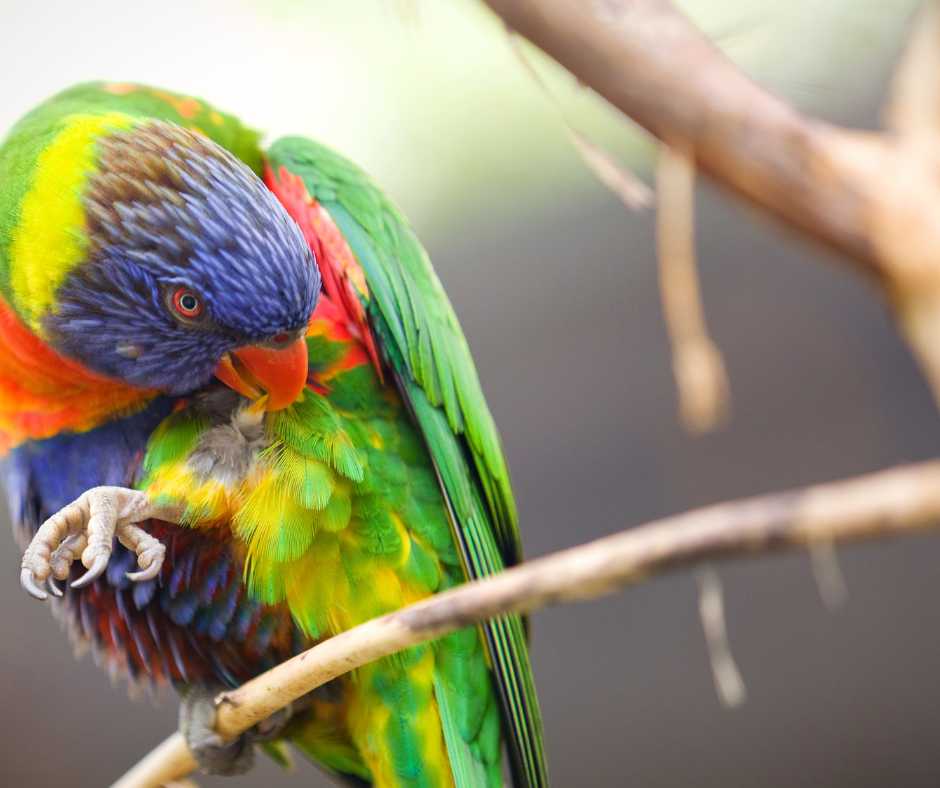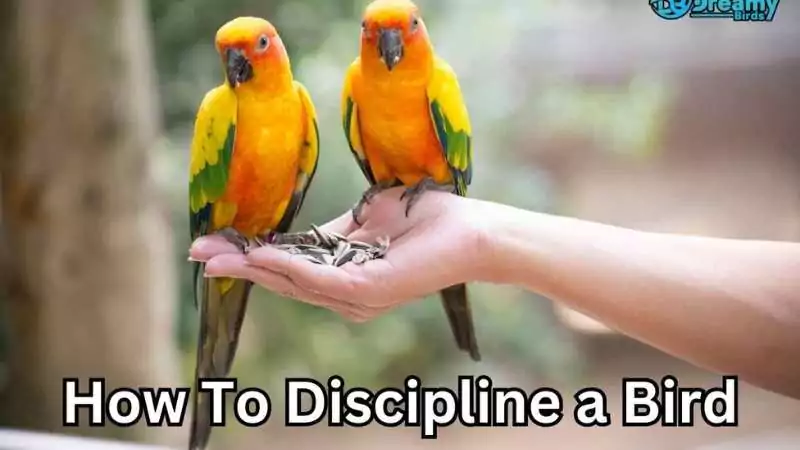Did you know most bird owners face challenges in understanding their feathered friends? It’s true! But the discipline of a bird is easier than it sounds.
Discipline your bird with positive reinforcement, patience, and consistency. Reward good behaviors, use toys to redirect biting, ignore screams to promote quietness, and enrich their environment to prevent plucking. Teach simple commands to strengthen your bond.
This blog is your go-to guide, filled with easy steps to build a respectful and loving relationship with your bird.
From turning biting into playtime with toys to rewarding quiet moments instead of loud squawks, we’re here to help you and your bird communicate better. Get ready to dive into a world where teaching and learning from each other strengthens your bond with your bird.
Fundamental Principles of Bird Discipline
Teaching your bird to behave is simpler than you think. It’s all about being positive, patient, and consistent. When your bird does something good, make a big deal out of it with their favorite snack or some extra attention. This way, they’ll want to keep doing those good things.
Being patient means understanding things won’t change overnight. It takes time for your bird to learn and trust you. There might be some bumps, but staying calm helps you move forward.
Staying consistent is super important. Imagine how confusing it would be if the rules kept changing. Your bird feels the same way. Keeping things steady and clear helps your bird understand what you expect.
In short, teaching your bird is about guiding them with kindness, cheering for their successes, and knowing it takes time. Your calm, steady support, and positivity help your bird become its best self. Together, you can achieve amazing things.
Read more: How to Potty Train a Bird

Step-by-Step Guide to Correcting Unwanted Behaviors
Navigating the bird parenting world can feel like being a detective and a diplomat rolled into one. Let’s unravel the mystery of biting, screaming, and feather plucking together with empathy and a sprinkle of humor.
Addressing Biting:
So, your bird has turned your finger into their personal chew toy. First, don’t take it personally. Birds nip for reasons like fear, excitement, or even affection. The trick is to keep your cool.
Yelling or pulling away might only amp up their excitement or scare them more. Try offering them a toy or something safe to chew on instead. It’s like swapping out your favorite sneakers (which they also love) for a chew toy when a puppy gets nippy. PedMd covers how to train birds not to bite, check that out.
Reducing Screaming:
Birds scream for all sorts of reasons – they’re bored, they’re lonely, or they want to chat. While it might be tempting to scream back, it usually turns your home into a noisy echo chamber.
Instead, try to figure out what they need. Are they looking for attention, or is it more about boredom? Rewarding them when they’re quiet, maybe with a treat or some gentle praise, can teach them that silence (or at least lower volumes) is golden.
Preventing Feather Plucking:
Feather plucking tugs at the heartstrings. It’s often a sign your bird is stressed, anxious, or bored. This is where enriching their environment comes into play. More toys, more playtime with you, and some bird-safe plants to explore can make a big difference.
Also, consider their diet and sleep schedule—like us, a balanced diet and a good night’s sleep can improve their mood.

Remember, every bird is unique, and what works for one might not work for another. It’s all about patience, understanding, and trial and error. But it’s all worth it when you finally crack the code and see them happy and thriving. You’re not their caretaker; you’re their buddy, their family. And that bond? It’s something exceptional.
You may also read: How to Teach a Bird to Fly
Training Your Bird: Commands and Communication
Training your bird to understand commands is like learning a unique way to talk to each other. It’s not only about cool tricks but about strengthening your bond. Teaching simple commands such as “step up” on your hand shows trust and friendship growing between you and your bird.
Picture this: you call your bird, which happily flies to you. That moment was pretty awesome. It shows that your bird is getting it, and you’re having fun together.
Hearing about birds that can pick up things or repeat words might seem impressive, and it is! But even the small steps you and your bird take together count a lot. Every time your bird learns something new, you’re both getting closer.
Remember, treats and kind words help a lot. But the real win is enjoying your time teaching and learning from each other. So, get ready with some snacks and start this adventure excitedly. You’re not only teaching your bird but also learning how to connect better, and that’s pretty special.

People Also Asked
What should I do when my bird nips at me?
Stay calm and collected. Instead of scolding, gently offer a toy or a perch for them to nibble on. This redirects their attention without causing stress.
How can I reduce my bird’s screaming?
Birds scream for various reasons, but often, it’s a call for attention or out of boredom. Rewarding them when they’re quiet and doing your best to ignore the loud moments can encourage more peaceful behavior. It’s like not giving in when a toddler throws a tantrum for candy.
What treats are best during training sessions?
Birds typically love seeds or small pieces of fruit. Watch your bird’s reaction to different treats to discover their favorites. It’s like discovering which ice cream flavor makes your friend’s eyes light up.
How long will it take for my bird to stop biting or screaming?
Patience is key. It might take weeks or even months. Consistency in your response and routine is crucial. Think of it as training for a marathon, where slow and steady wins the race.
Can my bird understand what I’m saying?
While they might not understand every word, birds are great at picking up on tones and body language. It’s more about how you say something than the exact words you use like a good friend can tell how you’re feeling by the tone of your voice.
Wrap Up
As we finish this guide, let’s remember that training your bird is a journey filled with happy and learning moments. Every step you and your bird take together makes your friendship stronger. It builds trust and happiness. Even the small wins are significant achievements that change you and your bird.
Stay patient, stay positive, and keep at it; you’ll see your bond with your bird become very special. Here’s to all the fun, learning, and friendship moments that are coming your way with your well-behaved bird. You’re not just teaching them; you’re both growing friendships that will last forever.

